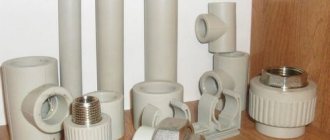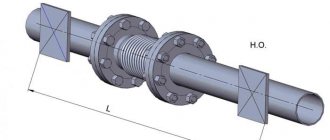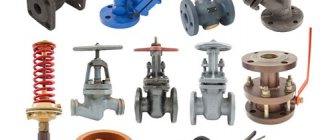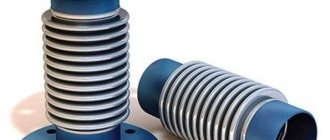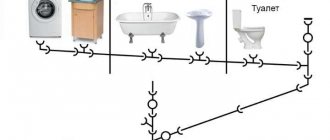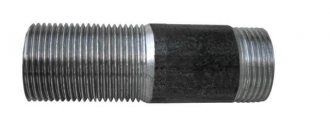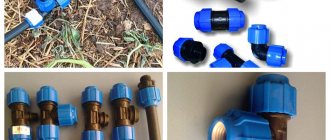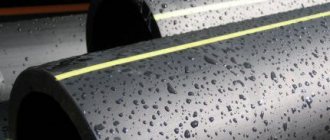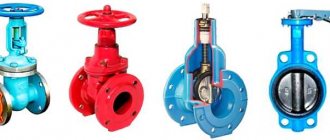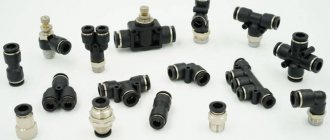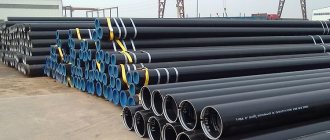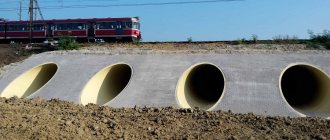The connecting parts of the pipeline are located at its turns, branches, and where the diameter of the pipes changes. The parts, being embedded between pipe sections, form a single sealed system. The functions of such pipeline elements are to ensure tightness and operational reliability. It is necessary to select connecting elements (pipeline fittings) as responsibly as pipes. The connecting elements must be made of materials that have the same thermal expansion value as the pipes.
General information
Pipeline connecting elements or, as they are also called, fittings perform several functions. In addition to the fact that they allow you to form the desired pipeline element, for example, a branch or transition, fittings ensure the tightness of the joints and, at the same time, are responsible for the reliability of the system.
Accordingly, the durability of the entire pipeline depends on them. Therefore, the choice of connecting parts must be approached no less responsibly than the choice of pipes themselves. And to do this, you need to familiarize yourself with all their existing types, which we will do next.
General characteristics of pipeline connecting parts
Fittings not only allow you to branch a pipeline, form a transition or connect measuring instruments and other equipment, but also ensure the tightness of the system.
They must be made of the same material (or one close to it in terms of physical and chemical parameters) as other pipeline elements due to possible thermal expansion during operation. Different material parameters can lead to pipe rupture and leakage of components.
Connecting fittings are used on pipelines transporting completely different media. They are widely used in the public utilities sector to create water, gas and heat pipelines, and sewer systems.
In the industrial sector, they are used to organize pipe systems that carry aggressive chemical media, water, gas with various impurities. They are installed on “production” pipelines transporting oil, natural gas, and refined products.
Types of connections
First of all, it should be said that there are two types of pipeline connections:
- Detachable – these include connections made by soldering, welding, pressing, concreting or gluing.
- One-piece - threaded, flanged, socket, etc.
Part for dismountable flange connection
The types of pipeline connections depend on the material from which the parts are made, as well as on the following factors:
- Physico-chemical properties of the transported product, such as toxicity, aggressiveness, ability to form sediment, etc.
- Operating conditions – the need for frequent disassembly, pressure in the system, explosion safety, etc.
Depending on the type of connection of pipeline elements, connecting parts are also selected. But, in addition to the type of connection, fittings differ in purpose.
The most common parts found in pipelines are:
- Bends;
- Tees;
- Transitions;
- Connecting couplings.
Now let's take a closer look at their types and purpose.
Bends or swivel fittings
Bends
The main function of bends is to change the trajectory of the pipe and the direction of the working flow. This type of fitting is one of the most common in pipeline construction. Visually, this part can be represented as a section of pipe bent at a certain angle.
Of course, in pipelines of small diameter, you can make a turn by bending the pipe with your own hands, but if the diameter is large, then bending the pipes will not work.
Therefore, bends are used in a variety of types of systems:
- In chemical pipelines;
- Water pipelines;
- Heating mains;
- Gas pipelines, etc.
An example of using bends in a gas pipeline
According to the manufacturing method, connecting pipeline bends are divided into:
| Bent | These products are characterized by angles of 3 – 90° with gradations of one degree. They are made, as you might guess from the name, by cold bending or under high temperature. |
| Stamped | They are made by stamping blanks and then welding them. |
| Made using the broaching method (solid drawn bent) | These products are made by drawing along a horn-shaped core. A feature of seamless bent bends is their small radius of curvature. |
| Welded sectional | Performed by welding pipe scraps. |
The most common are stamped bends and those made by broaching.
As for design features, the most popular are steeply curved products, i.e. having a small radius and characterized by the following rotation angles:
- 45 degrees;
- 60 degrees;
- 90 degrees;
- 180 degrees.
Recently, stainless steel bends, which are made of steel containing chromium, have become very popular when installing various types of pipelines. Their advantage is resistance to corrosion and various aggressive environments.
Note! A variety of rotation angles allows for the best system throughput. After all, turning the pipeline at an angle of 90 degrees is the most common source of turbulence, as well as a catalyst for silt deposits in the system.
The classification of rotary joints can also be done according to two criteria:
- Construction material;
- According to the technology of installation of this element in the pipeline.
For installation of steel systems, the corner elbow is a threaded coupling, the body of which is bent at a certain angle. However, there are similar fittings for welded joints, in which case their internal and external diameters are equal to the internal and external diameters of the pipeline.
In polymer pipelines, depending on their type, the connection can be welded or socket.
Tee
Tees
This type of fittings is installed in places where it is necessary to branch the pipeline.
Depending on the relationship of the tee neck to the tee body, they are distinguished into:
- Transitional - have different diameters of the neck and body through holes. They are used in areas where the branch pipeline differs in diameter from the central one.
- Equal tees - have the same diameter of the neck and body through holes.
It should be noted that tees are among those pipeline parts that are subject to high dynamic loads and pressure. Therefore, high demands are placed on them regarding reliability and durability.
Adapter tee for threaded connection
By area of application, tees are divided into:
- Products for work in moderately aggressive and low-aggressive environments are made from carbon steel grades - 10, 20, StZ.
- Products for work in highly aggressive environments are made from alloyed and high-alloy steel grades - 5Х5М, 15ХМ1, 12Х18Н10Т, etc. Of course, the price of such parts is higher.
Manufacturers use different methods for making tees:
- By casting into molds;
- By gas cutting of parts and their subsequent welding;
- By stamping with a solid forging and subsequent drilling of holes;
- By stamping a steel sheet and subsequent welding.
Stamp-welded transition
Transitions
Transitions are parts that allow you to smoothly change the diameter of the pipeline.
Today there are many different options for adapters, which are divided primarily into:
- Stamped;
- Welded.
The main characteristics of adapters are the inlet and outlet diameters, as well as the length of the transition. In addition, products may differ in the material from which they are made.
Perhaps the most widely used are stainless steel adapters, which are used in the following areas:
- Chemical – due to resistance to aggressive environments;
- Food - due to environmental friendliness;
- Energy – as a result of strength and durability.
The need for transition can be caused by a variety of reasons. For example, reducing the diameter will increase the pressure in the pipes and, as a result, increase the pressure. Expansion allows you to achieve the opposite effect.
Flange transition
Thus, transitions are a valuable component for distributing pressure and planning loads on the system. As with tees, transitions are subject to increased requirements regarding reliability and strength.
Currently, there are several ways to manufacture these parts:
- Forging of ring-shaped or stamping of conical forgings with their further mechanical processing;
- Rolling from sheet blanks and subsequent welding;
- Stamping from sheet blanks and subsequent welding;
- Stamping from pipe blanks by crimping or expansion.
According to the installation method, transitions can be either dismounted or welded.
Note! Welded connections of pipelines in accordance with GOST 16037-80 are allowed only if the fittings are made of the same grade of steel as the pipes.
Flange with threaded connection
Flanges
Flanges are disc-shaped parts (sometimes in the form of a square frame) designed to connect pipes of the same diameter using bolts. This connection is used primarily in places where pipelines are connected to equipment that has mating flanges, as well as in sections of pipelines that require periodic replacement and disassembly during operation.
These parts differ in the way they are connected to the pipes.
They are:
- Welded;
- Threaded.
Scheme of flange connection of pipes made of different materials
Flange welded joints according to GOST 12815-80 are divided into:
- Flat welded (welded with two seams);
- Loose on welded ring;
- Butt-welded.
To connect pipes made of alloy steels, loose flanges are used, which rest on the flanged end of the pipe. Threaded connections are usually used for high-pressure pipelines.
In the photo - loose flanges
The flange sizes are standardized, which ensures their interchangeability in pipelines.
This applies to:
- Outer diameter of the part;
- Bolt circle diameter;
- Diameter and number of bolt holes.
To seal the flange connections, a special gasket is used between them, the shape of which depends on the properties of the transported liquid or gas and the pressure in the system.
According to GOST 12815-80, there are eight types of flange sealing planes:
- With ledge;
- With connecting ledge;
- With a depression;
- With groove;
- With a thorn
- For an oval gasket;
- Tenon and groove for fluoroplastic gaskets;
- Under the lens gasket.
It should be noted that the tightness of the connection largely depends on the quality of the gaskets.
Therefore, the following requirements are imposed on them:
- Elasticity;
- Strength;
- Strength;
- Thermal resistance;
- Chemical resistance.
Note! The instructions for the use of threaded and flanged connections do not allow their use for pipelines laid in places that are difficult to access for inspection.
Coupling connection diagram
Couplings
A coupling is a part whose internal diameter is equal to the outer diameter of the pipes being connected. These connections can be used for installation of both collapsible and monolithic pipelines. In the first case, threaded couplings are used, and in the second, adhesive or welded couplings are used.
It must be said that in any case the coupling provides a tight connection. The pipeline material can be anything, the most important thing is that it matches the coupling material.
In essence, the coupling is an alternative to a flange connection. For example, in steel pipelines, like flanges, it allows for the dismantling and replacement of individual sections of the system. Since metal pipelines are not very durable, this option is very popular.
It should be noted that there is another type of coupling - bell-type couplings, which are used in non-pressure pipelines, for example, in sewer systems. The connection in this case is made using rubber seals.
Plugs and hardware for installation of pipeline elements
Another element of the pipeline system is the plug. It is characterized by its simple design, but is subject to significant loads due to its location at the end of the pipe - water hammer.
Plugs can be flanged or elliptical, depending on the shape and method of installation to the edge of the pipe. Due to the risk of water hammer, these products have a more massive structure compared to pipes.
It is also worth mentioning another connecting element of the pipeline - a fitting (a short piece of pipe with a cylindrical thread in accordance with GOST 6357). It is used to lengthen a pipe section, install control devices, measuring instruments on a pipeline, and insert fittings.
The use of such segments allows for technological removal of failed components without the use of gas cutting. You just need to unscrew the area where the failure occurred. Example - installation of heating radiators in a room is carried out through fittings.
Along with the pipeline elements, it is important to have special hardware and sealing materials necessary to create a tight and durable detachable connection. Such hardware includes: bolts, nuts, studs, flange washers, gaskets (rubber, fluoroplastic, paronite, cardboard, metal lenses, TRG, etc.)
Sealing gaskets are placed at pipe joints, as well as where the pipeline touches supports. They are installed there to prevent the development of corrosion and isolate the main system from electric fields.
Hardware is made from different grades of steel. They must have high tensile strength, ensure reliability and safe operation of the system. The most common material is alloy steel with the addition of manganese, chromium and nickel.
Comments
March 11, 2021
Posted by BrianBuh
I bought here Creativity » Other types of creativity » DIY jewelry » Accessories for jewelry » Connecting rings and elements tovaromania.rf/index.php?cat=166014 delivered free of charge
Answer
May 06, 2021
Author: Haroldcem
I bought it here Costume jewelry » Accessories for jewelry » Connecting rings and elements tovaromania.rf/index.php?cat=165948 delivered free of charge
Answer
GOST
There is no single state standard for the entire group of products, since the range can be divided into two classes. For each of them, a separate GOST is used.
- welded parts of pipelines - GOST 17380-2001;
- shaped with threaded connection - GOST 8965-75.
It is also worth noting that each pipeline part discussed below has a GOST, which additionally describes the characteristics unique to it.
Application
The difference in the use of welded and shaped parts has already been touched upon above, but it is worth dwelling on this point in more detail.
Welded parts of pipelines are most often used for the installation of large systems, including main water and gas pipelines, where maximum reliability and tightness of the connection is required, and the pipes themselves have impressive diameters.
The range of sizes of shaped parts and their maximum diameter are significantly smaller, so this class of products is mainly used in residential construction of pipeline parts, namely in the installation of water and gas supply systems, as well as heating, together with VGP (water and gas) pipes of the appropriate diameters - https:/ /stvybor.ru/chernyj-metall/truba-vgp/
